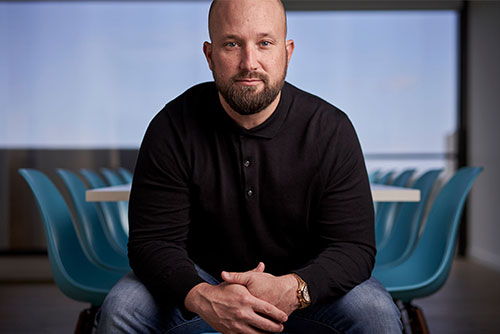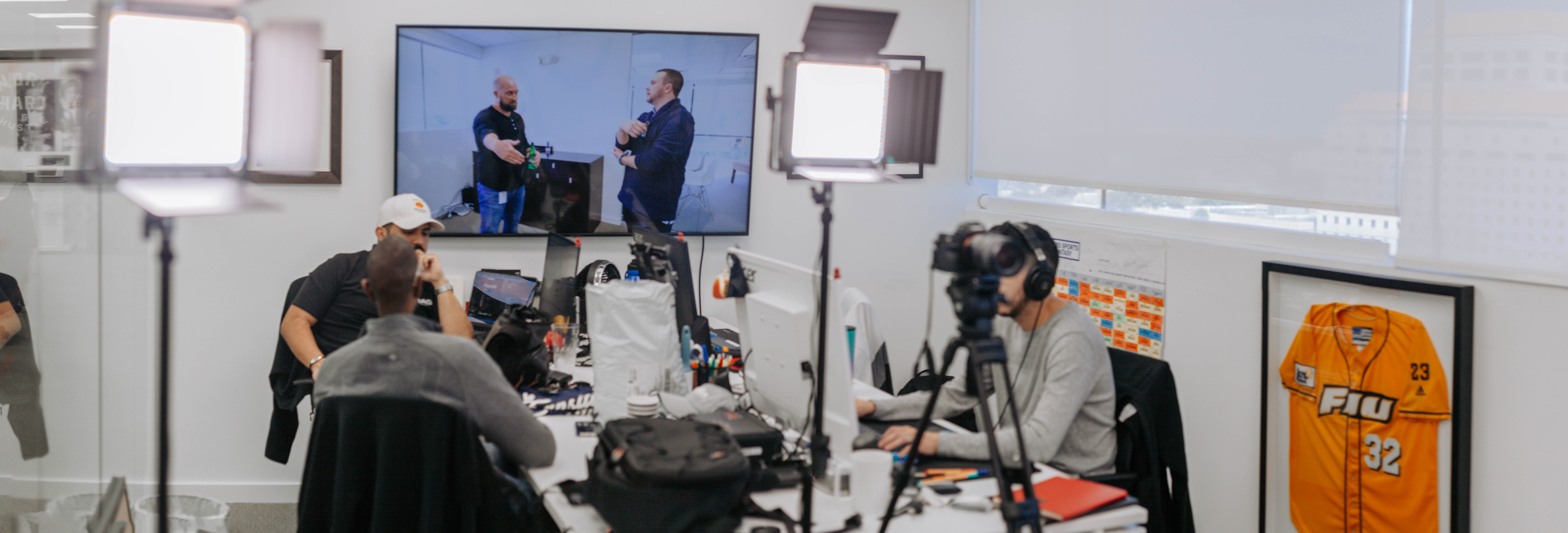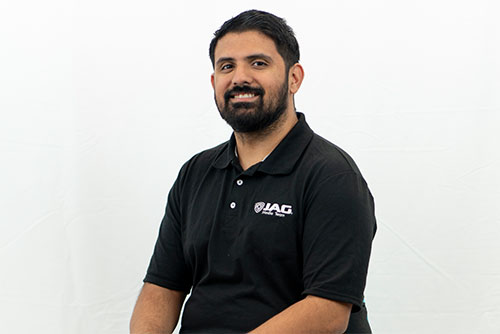

Social media offers many avenues for insurance agents to put their faces and businesses out into the cyberspace and potentially reach new prospects. However, getting started on social media can seem daunting, from which channels to use to how often posts should go up and the content to include in those posts.
While there are some basics that will help agencies get off on the right foot, each agency will likely find a unique social media strategy that works for them and their brand, as Insurance Business discovered when speaking with agency leaders about their experiences.
“I try to follow the 80/20 rule, so 80% of [the posts are] fun and light-hearted and then because we do have to sell insurance, 20% of the posts [relate] to insurance,” said Jared Bellmund (pictured above), managing partner at ALLCHOICE Insurance. “Sometimes I’ll ask questions like, ‘What do you think is better: whole life or term life?’ and people will engage with that poll. Then we’re able to ask more insurance-related questions, like, ‘Why do you think whole life? Do you have whole life?’ and delve into that.”
Bellmund, who runs ALLCHOICE’s Instagram as well as Facebook and Twitter, has found that asking questions or finding things that people want to engage with, especially through the Instagram stories feature, is the most fruitful way to use that platform. The agency has also defined its brand through Instagram to show that its team isn’t made up of traditional insurance professionals wearing suits and ties. In fact, the agency’s logo of a black and white graphic that shows a bearded man appears in various ways across its profile, and alongside images featuring Homer Simpson and funny quotes, there are also insights on the team behind the ALLCHOICE name and types of insurance coverages that small business owners should have.
For 2020, ALLCHOICE is planning to dip its toes into YouTube. While president and CEO Jack Wingate as well as Bellmund have individually used the platform already without an overarching strategy, the team has now been compiling questions from their customers (such as “I’m adding my 16-year-old to my auto policy – how does that work?”) and their various departments, and will answer them in upcoming videos.
Another approach to social media is to go at it full-throttle. A few years ago, the partners at JAG Insurance Group identified that their brand was well-known in certain markets and not well-known in others, and wanted to build up that brand awareness, explained Douglas Jones (pictured below), managing partner at JAG. The agency hired digital media company VaynerMedia in New York to help put together a social media strategy and expand its brand and presence. The team then hired its first digital media coordinator, which grew into a three-person in-house team that handles everything and anything to do with social media.

“We have a full podcast studio, a full video studio, a media lab [pictured below] – we spent hundreds and hundreds of thousands of dollars on our social media strictly for our insurance agency,” said Jones. “I don’t know that anybody’s really bought into it in the way that we have. We own everything – all the cameras, all the microphones, all the lighting, all the mixers, all the video equipment – and from that, we’re putting out hundreds of posts a week across our four main platforms. In addition to that, my partner shoots a weekly podcast from our office and we also open up our podcast room to local businesses and clients who also want to use that as a resource to have their own podcast, so we’ve dived into the deep end of social media.”

As for how Juan Lopez (pictured below), JAG’s digital media coordinator, and his team approach managing their social media channels, he likens it to Disney owning ESPN – there’s not much crossover since ESPN is focused on sports while Disney has a younger following, so you need to gear content towards each audience. In the same way, what performs well on Instagram isn’t necessarily going to perform well on LinkedIn – the latter is for more informational content and showing the culture of the office, while the former is for showing off the company’s personality with funny videos. The team has also recently jumped into TikTok, where they’re posting 15- to 30-second videos about trending topics.

“At first when I looked at this [platform], I thought, ‘I don’t know that our clientele is going to be on TikTok because it skews very young,’” said Lopez. “But if you think about it, you can go ahead and start building your brand with these younger people so that when they do grow up and they are going to buy insurance, they already know who JAG is and they already trust the brand, which is what happens with a lot of these brands. You grow up your whole life knowing what Nike is, you grow up your whole life knowing what Coke is.”
On the other hand, Twitter requires a short sentence that will offer scrollers-by a chuckle or an interesting bit of information, added Lopez. The challenge is identifying what each platform’s audience wants to see and providing content that meets those needs, as well as posting unique content to each channel so that one person following all of the four profiles won’t see the same content.
Read more: What not to do: social media horror shows
Determining whether a social media strategy is paying off can be tricky, since the number of likes on a post doesn’t necessarily translate to how much business an agency is getting. There are nonetheless other good indicators agencies can track to pinpoint the impact of their social strategy.
“As our impressions grow and our following grows, our book of business is growing. Despite the fact that it’s been constantly growing, it’s now growing at a rate that it wasn’t previously and we are hearing from prospects and old clients that we had years ago who are saying, ‘Hey, I saw you guys on LinkedIn’ or ‘I saw that post on Instagram, and thought I’d give you a call,’” said Jones.
Other tips from JAG’s digital media team is to use hashtags thoughtfully and post them in the first comment instead of directly below the photo, which looks a lot cleaner, and including closed captions on all videos on Instagram and LinkedIn so that people who scroll by and don’t have headphones can still consume the content.
While JAG has poured a lot of resources into its social media strategy, Jones and Lopez offer up recommendations that any agency can follow.
“If you have a phone, you can do it – it’s just about putting out constant content and not overthinking it,” said Jones. “If you think it’s bad, still put it out; if you think it’s good, put it out. It’s about getting eyeballs on you and like they say in old school PR, any publicity is good publicity. The same rings true for social media.”
Added Lopez: “Don’t be afraid to highlight your personality. No-one wants a persona – they want something raw, they want something real – and that’s where we have succeeded, is in highlighting the personalities here at the office, whether it’s the digital team, ownership, management, or even an account manager, because people want a window into your business. They don’t want some sort of fabrication.”
